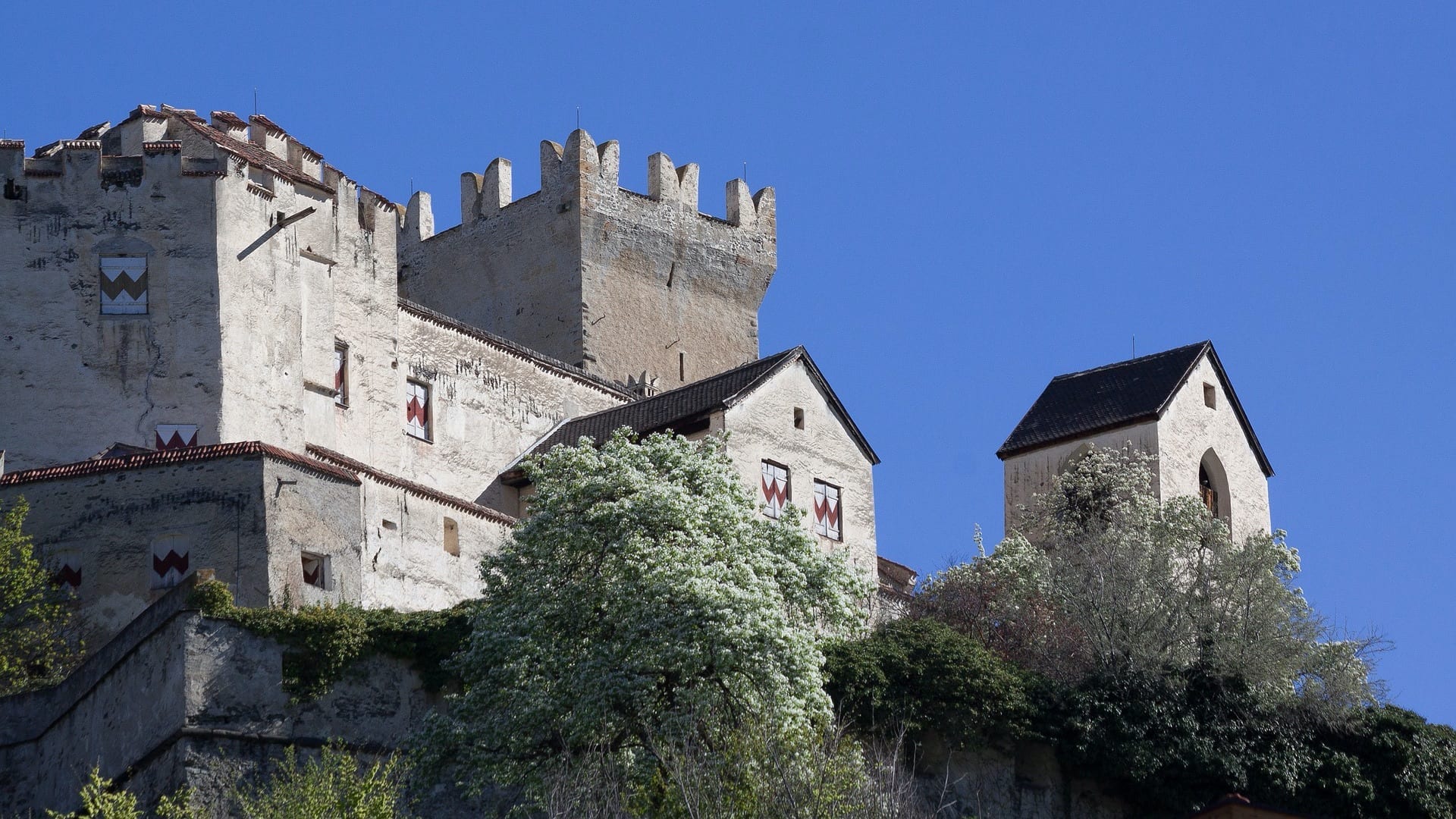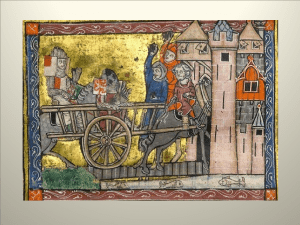

This article is Part 3 in a series about The Grail Romances of the Middle Ages and the Individuation Process by Lans Smith
One of the greatest Arthurian romances about marriage and relationship concerns the adulterous love between Lancelot and Guenevere. Chrétien’s version of the tale, called “The Knight of the Cart,” begins when a mysterious knight interrupts a meal to announce that he holds in captivity many knights, ladies, and maidens from Arthur’s domains. They will be released on condition that one knight be allowed to accompany Queen Guenevere into the nearby woods and defend her.
Arthur’s steward, Sir Kay, obtains permission to be that knight, threatening to leave Arthur’s service immediately, and refusing to relent until the Queen falls on the floor and begs Arthur to let Kay be the one.
Kay accompanies Guenevere and the mysterious intruder, as they ride off into the woods. This causes terrific distress, grief, and dejection among the courtiers, who comment on it as outrageous, arrogant, and absurd: Kay is a steward, not a warrior to be entrusted with the Queen’s safety.
As the Queen is led away, miserable and depressed, every man and woman of the court grieves as bitterly as if Guenevere lay dead in her coffin. Gawain rides out immediately after the Queen to see how Kay fares in her defense.
He finds Kay’s horse with the bridle snapped (a telling detail, suggesting that all hell has broken loose!), its saddle broken and battered, and its stirrup cups bloodstained. The rider-less horse signifies the removal of reason from its rightful place—something that often happens in marriage and relationship—and it is a common symbol in military funerals.
The court then sees Lancelot approaching on a horse that drops dead from exhaustion. Lancelot gets a new one from Gawain, which the court soon finds dead in a field trampled down and littered by broken lances and shields.
Now without a horse, Lancelot agrees to get on a cart pulled by a dwarf, who promises him knowledge of Guenevere’s whereabouts. Lancelot hesitates two steps before climbing on the cart, because, we are told, the cart was used in those days only for criminals guilty of treason, murder, theft, or highway robbery. Anyone put in the cart would lose all legal rights and be subject to the abuse and slander which is actually heaped on Lancelot when he and Gawain arrive a castle that same evening.
This supreme public humiliation, and the gruesome details leading up to it, suggest that a serious deflation of the ego and a complete resignation of the persona is the prerequisite for the hero journey of marriage! The wounding of chivalric pride, and the violation of courtly codes, gets the story going, and deepens the relationship.

Lancelot’s first ordeal occurs at midnight in the castle where he arrives in the cart. Though warned by the Lady of the castle that no knight who has been subjected to the shame of the cart would even think to lie in the magnificent bed, Lancelot asserts his right to the privilege.
This is the “Perilous Bed,” popularized by the Arthurian legends in tales usually devoted to Gawain. While sleeping in the bed, Lancelot is awakened at midnight by a lance shot down from the rafters like a thunderbolt, which pins him down and bursts into flames. The head of the lance just grazes his side, and Lancelot puts the fire out, throws the weapon away, and goes back to sleep!
Allusions to Christ become most pronounced during the famous sword bridge crossing, a scene often depicted in Medieval art. The water rushing beneath the bridge is black and turbid, as horrid and terrifying as if it were the Devil’s river. Two lions are tied to a stone slab at the opposite end of the bridge, which is described as a highly polished, razor-sharp, glistening sword. Having been previously wounded in the side while sleeping in the Perilous Bed, Lancelot is now grievously wounded in the hands and feet while crossing the sword bridge.
The wounds include all the ones associated with Jesus, and complete the portrait of Lancelot as the Crucified Christ (bleeding from palms, feet, and side) who redeems mankind from death (remember that Lancelot had done so earlier by lifting the stone slab of the sarcophagus).
In your journal, record a time in your life when you found yourself exhausted and humiliated in a relationship, and reflect upon how you coped in order to move forward.

Lans Smith
Evans Lansing ("Lans") Smith, Ph.D., received a B.A. in English from Williams College, an M.A. in Creative Writing from Antioch International (London and Dublin), and a Ph.D. in Literature from The Claremont Graduate School. He traveled with the late Joseph Campbell.
More Posts by Lans Smith